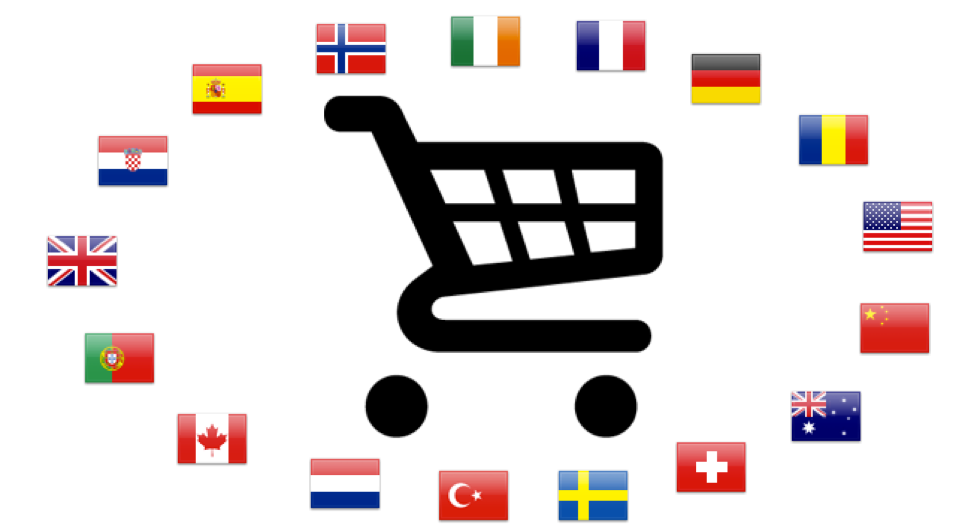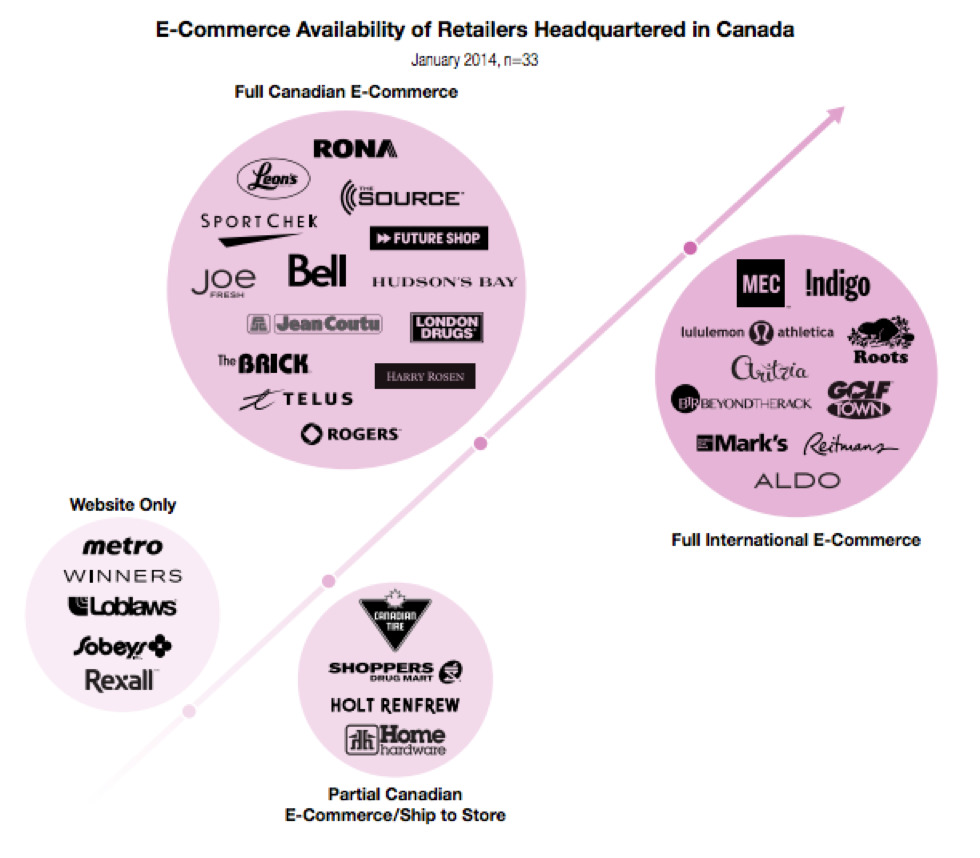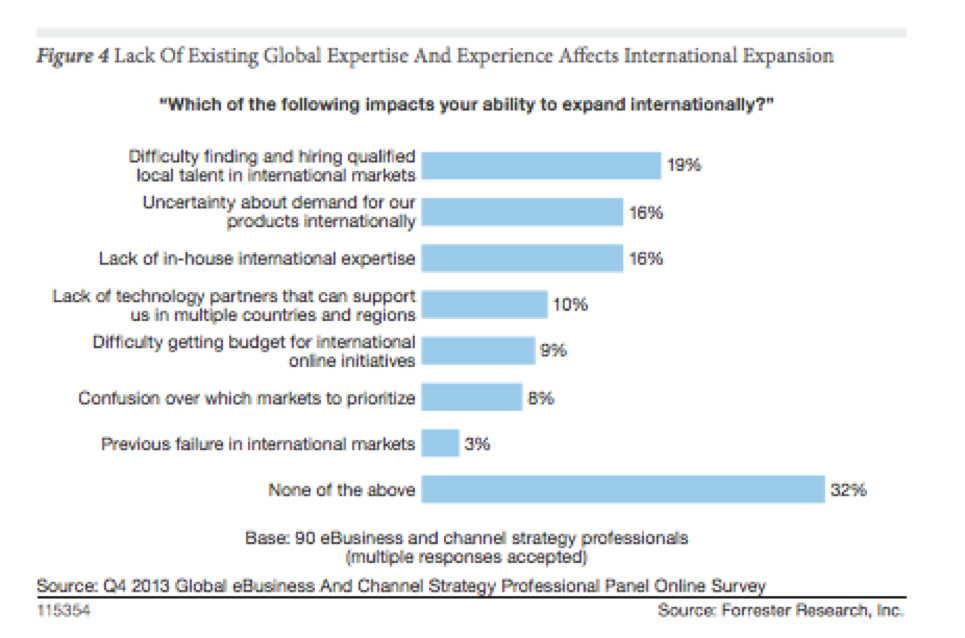
A study published by think tank L2 (Omnichannel Retail : Canada – march 2014) indicates that online international trade (ie. non-domestic) for the six largest e-commerce markets is expected to grow fivefold to $130 billion in 2020. A pretty lucrative business.
Retailers on certain markets – especially in the US and UK – have well understood this major opportunity related to the internationalization and globalization of e-Commerce. In the UK international growth in online sales is expected to outpace domestic online growth, and account for 40 % of total online sales by 2020. Internationalization has become the norm – 74 % of the top 100 retail sites in the UK ship globally and 21% delivering to over 100 countries.
Canada’s lagging
The situation in Canada is far from these figures. I had the opportunity to write in a recent post about Canadian brands ignoring the e-Commerce opportunity, a paradox as Canadian consumers are amongst the most connected people on the planet and eager to buy online.
L2 Study analyses in detail 33 Canadian brands showing that only 10 of them are offering cross border delivery to the US and the rest of the world!

Canadian retailers are clearly reluctant to embrace international e-Commerce and to develop a global online presence. This is worrying for brands that may well miss a big lucrative business opportunity in the years to come if they do not react promptly.
Global online expansion is not an easy matter
We must recognize that international online expansion is not a simple task to do for a brand and it may be costly to achieve success. It requires a strategic approach to be successful and some strong drive and support at executive/board level.
Forrester Research has published about a year ago on this matter and identified some best practices that they observed at companies who had successfully expanded their online business internationally. Those organizations who did better than the others actually share some common characteristics: great teams, the right organizational structure, sufficient budget and innovative ideas for selling online. They all based their expansion initiatives on a solid strategic plan and they all followed some similar best practices:
1/ Adapting products and site features to local needs and market conditions
The big mistake would be to replicate online offering from one market to another, or worse, to define a subset of the main site to address distant markets. Best approach is definitely to customize product offerings and web content (newsfeed, highlighting different products, …) based on local customer needs and expectations. Focusing on the value proposition for each individual market and assessing the business opportunity for each of them is the way to go.
As an example, Chanel Parfums Beauté is adapting all of its online content per market. PilotPen Europe (40 countries supported) uses a matrix for localizing colors taking into account perception and appreciation of colors that differ in each country. Longchamp has integrated a “cash-on-delivery” service specifically for Japan online customers.
KEY QUESTIONS:
- Which products should we sell and highlight in each new market?
- Which specific products should we develop and sell on those markets to be competitive?
- Which online features are most appreciated by local online customers (eg. Video Reviews and tutorials, in-store pickup, …)?
- What is the expected ROI for those features?
2/ Understanding international and local competition
In-depth understanding of competition for each remote market, whether it comes from international competitors or local competitors is key to achieve success, create competitive counteroffers and win market shares.
As an example GAP is offering a different size run in Japan (XXXS to M) than in other markets (XS to XXL) to differentiate from competitors.
KEY QUESTIONS:
- Who are your international and local competitors on each market
- What are their online strengths and weaknesses?
- What are their value propositions?
- How to differentiate?
- What is the cost for such differentiation?
3/ Allocating adequate headcount
Finding and recruiting qualified local resources is the most common challenge reported by companies expanding their e-business internationally.

Some headcount can be centralized but only skilled local resources can properly understand, plan and manage most effective local marketing tactics. This has a cost. Local executives combining an in-depth understanding of the local market and culture with a US or European education are often more expensive that their expatriate counterpart. Staff turnover is also often very high especially in high growth markets (in China a 25% employee turnover rate is common).
KEY QUESTIONS:
- Which teams should we put in place globally and locally?
- What are the associated costs?
4/ Allocating sufficient budgets
A best practice is really for a company to consider its online presence on a new market as a brand new activity and not as the extension of an existing activity. Again, this may not come cheap and substantial amount of money will be required for developing and managing local sites, for launching initiatives for acquiring and retaining new clients, for setting up local teams, not to mention the cost of legal fees and regulatory guidance in each country. Even if a brand decides to expand its online presence through market places, cost won’t be null. Creating localized content, operating a branded marketplace store, managing ratings and reviews will come at a cost that can easily exceed $50000 a month. Whatever approach is taken the path to ROI may be long and may well take several years.
Addressing budget issues is therefore essential and should happen as soon as you consider the international development of your online presence.
KEY QUESTIONS:
- What are the costs related to building a global e-commerce business?
- What changes in the core business should be made?
- What are the costs for expanding in each market individually?
- What is the ROI?
5/ Getting the right executive support
It is essential to insure strong executive support as international eCommerce expansion initiatives impact company’s offering, organization and require substantial investments. Without such support chances of success are minimal. Getting executive support must be addressed early in the process, as the strategy planning exercise starts.
KEY QUESTIONS:
- How much support do we have from the C-Suite for such global initiative?
- How can we position this initiative so that we can maximize executive support?
- How can we leverage existing internal global knowledge?
These few recommendations and best practices should help organizations, Canadian or not, willing to engage in the development of their global online business in the right way.
Many other questions remain of course, which could not be discussed in this post. Clever Age consultants are engaged on a daily basis with major brands in the definition and the implementation of global and international digital strategies. They can help you for your own strategic initiatives.



